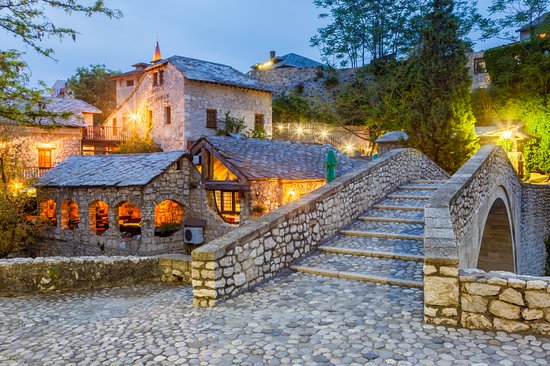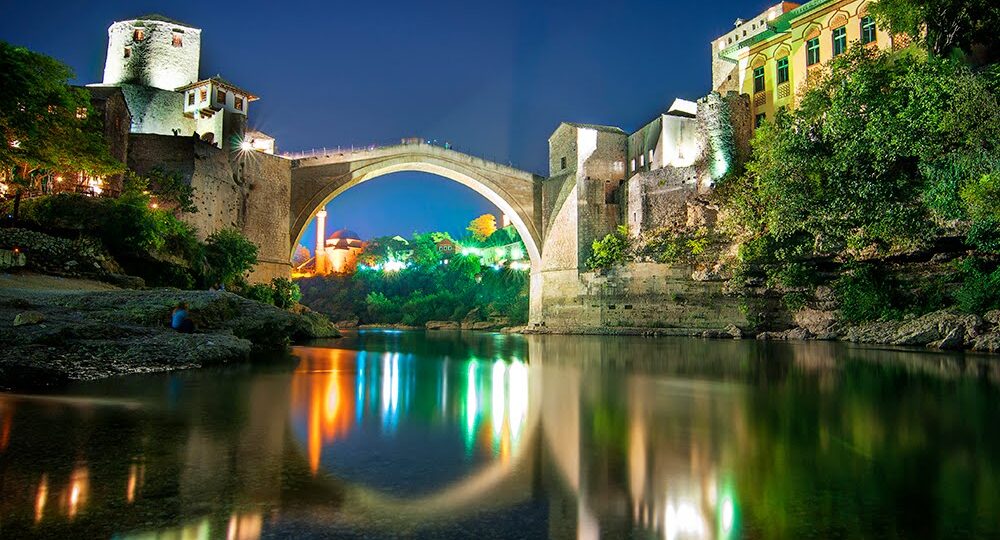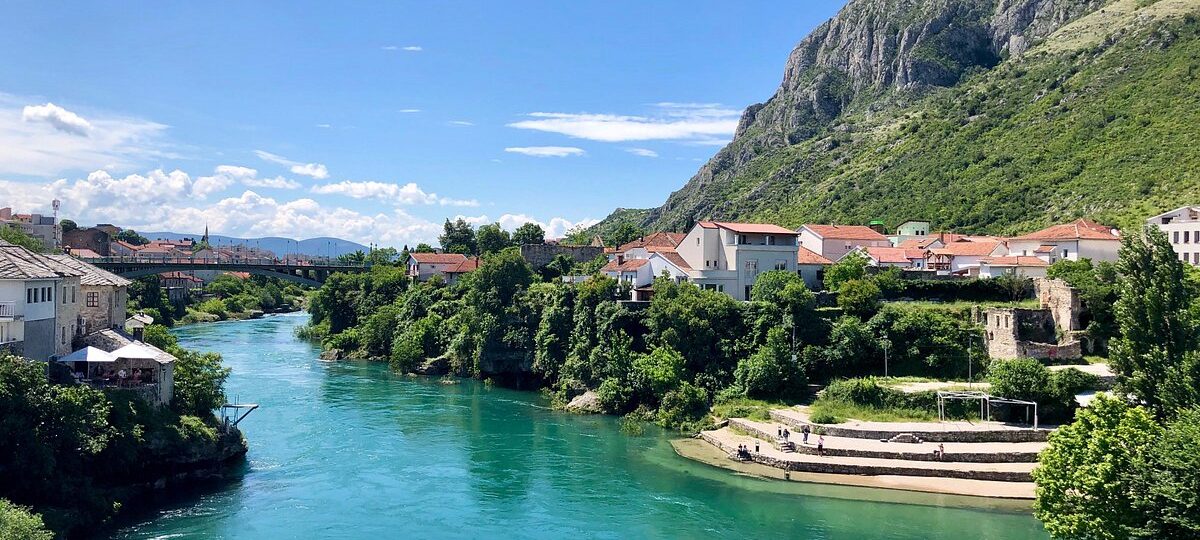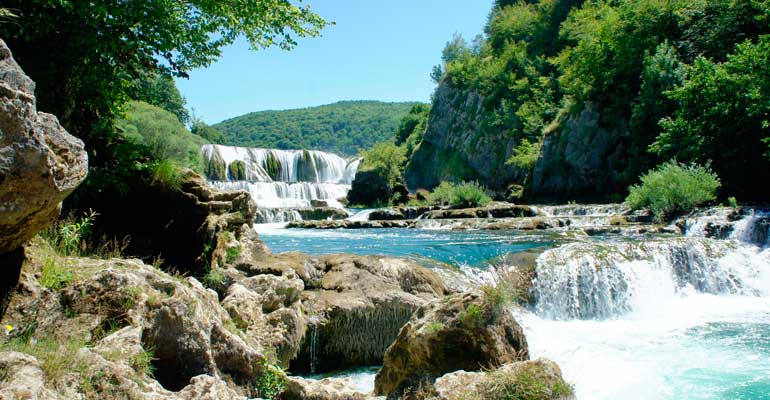Mostar, a city located in the heart of Bosnia and Herzegovina, has undergone a significant transformation over recent years, developing into an increasingly popular destination for international tourists. Historically known for its picturesque Old Bridge (Stari Most), which stands as a symbol of resilience and cultural heritage, Mostar has strategically expanded its tourism offerings to cater to an evolving global market. Through the enhancement of its international airport, the introduction of the “Winter Town” concept, and the addition of Fortica Park, Mostar is positioning itself as a year-round destination with modern amenities while maintaining its unique charm.
Expanding the International Airport
One of the cornerstones of Mostar’s tourism growth has been the expansion of its international airport. Mostar International Airport (OMO), located just outside the city, is central to this transformation. Until recently, Mostar’s airport was primarily focused on seasonal flights, offering limited connectivity primarily to destinations in Europe. However, recognizing the potential for growth in tourism, particularly from countries in Europe and the Middle East, significant investments have been made to upgrade the airport’s infrastructure and services.
The airport expansion included improvements to the terminal building, the extension of runways to accommodate larger aircraft, and the modernization of air traffic control systems. As a result, Mostar has seen an increase in direct flights from major European cities. This enhanced connectivity allows international travelers to more easily access the city, resulting in higher numbers of visitors throughout the year.
The airport expansion has not only made Mostar more accessible but has also contributed to the overall economic development of the region. As more tourists arrive, the city’s hotels, restaurants, transport services, and local businesses benefit. Moreover, the international airport has positioned Mostar as an attractive alternative to Sarajevo, Bosnia’s capital, which traditionally served as the primary entry point for visitors to the country. This shift in accessibility has opened up new opportunities for tourism and helped Mostar become a key player in the regional tourism industry.
Introducing the Winter Town Concept
In addition to improving infrastructure, Mostar has taken bold steps to diversify its tourism offerings by introducing the “Winter Town” concept. Traditionally known for its warm Mediterranean climate and summer tourism, Mostar has worked diligently to broaden its appeal to tourists in the colder months. This new initiative aims to provide visitors with a unique winter experience, emphasizing cultural, sporting, and festive activities that are typically unavailable during the summer season.
The Winter Town initiative includes a range of activities, such as ice skating rinks, Christmas markets, and a vibrant New Year’s Eve celebration. It also features a variety of winter sports activities, including skiing and snowboarding in the nearby mountains. By offering these seasonal activities, Mostar has not only broadened its tourism appeal but also created new opportunities for local businesses during the off-peak months.
The Winter Town concept has been especially successful in drawing tourists from nearby countries like Croatia, Serbia, and Montenegro, as well as international visitors from farther afield. For example, visitors from the colder northern European countries, who may have initially dismissed Mostar as a summer-only destination, are now discovering the beauty of the city in winter. This seasonal shift has helped Mostar extend its tourism season, creating a more stable and consistent flow of visitors year-round. Furthermore, the Winter Town initiative has fostered a sense of community pride and unity as local businesses and residents collaborate to create a festive and welcoming atmosphere for tourists.
Fortica Park: A New Tourist Attraction
Mostar has also made significant strides in enhancing its outdoor tourism offering, with the development of Fortica Park. Located on the hill above the city, Fortica Park is an area of natural beauty and historical significance. The park is home to the Fortica Fortress, which dates back to the Ottoman period and offers panoramic views of the city below. It is a popular spot for both tourists and locals looking to explore Mostar’s rich history and enjoy its stunning natural surroundings.
In recent years, Fortica Park has been developed into a major tourist attraction, with new walking paths, viewpoints, and interactive installations designed to highlight the city’s historical and cultural legacy. The addition of modern amenities, such as well-maintained trails and observation decks, allows visitors to explore the site with ease. Moreover, the park is designed to be accessible for individuals of all ages, making it a family-friendly attraction.
Fortica Park is also home to a variety of outdoor events, including cultural performances, art exhibitions, and eco-tourism activities. The park’s natural beauty, combined with its rich history, has made it a key element in Mostar’s growing tourism offering. Visitors can enjoy hiking and sightseeing while also learning about Mostar’s past through informative displays and guided tours. The fortress itself is a fascinating site, and its elevated position offers one of the best views of Mostar and the surrounding area, including the iconic Stari Most and the Neretva River.
In addition to being a major tourist attraction, Fortica Park serves as an important space for environmental and ecological education. As Mostar continues to embrace sustainability in tourism, the park provides an example of how natural and cultural heritage can be preserved and celebrated. The park’s development has drawn praise for its ability to balance tourism and conservation, creating an inviting space for visitors while respecting the environment.
The Impact on Local Economy and Tourism Infrastructure
The combined efforts of airport expansion, the Winter Town initiative, and Fortica Park have had a profound impact on Mostar’s local economy and tourism infrastructure. The growth of the tourism sector has provided a significant boost to local businesses, including hotels, restaurants, shops, and transportation services. Mostar’s hospitality sector has flourished, with new hotels and guesthouses opening to accommodate the rising number of tourists.
The city’s infrastructure has also been enhanced to meet the needs of modern tourists. In addition to transportation upgrades, Mostar has improved public services and facilities to ensure that visitors have a comfortable and enjoyable stay. The introduction of digital platforms, such as online booking systems and visitor information apps, has made it easier for tourists to plan their trips and navigate the city.
Moreover, the influx of international tourists has encouraged the development of a more diverse tourism offering, from guided city tours and cultural experiences to culinary events and wine tastings. Mostar’s rich history, combined with its evolving tourism offerings, has made it a must-visit destination in the region. The city’s investment in tourism infrastructure has positioned it as a modern and dynamic destination while retaining the authenticity and charm that makes it so special.
The city of Mostar has undergone a remarkable transformation in recent years, solidifying its position as a leading tourist destination in Bosnia and Herzegovina. With the expansion of Mostar International Airport, the introduction of the Winter Town concept, and the addition of Fortica Park to the city’s tourist offer, Mostar has successfully diversified its tourism appeal, attracting visitors year-round. These advancements in infrastructure and attractions have not only enhanced the city’s appeal to international tourists but have also contributed to its economic development and sustainability.
By balancing modern amenities with its rich cultural heritage, Mostar has created a unique blend of old and new, offering visitors an unforgettable experience that combines natural beauty, history, and innovation. As the city continues to grow and evolve, Mostar is sure to remain a key player in the regional tourism industry, offering travelers an authentic and enriching experience.




